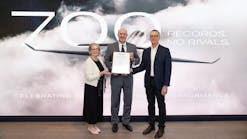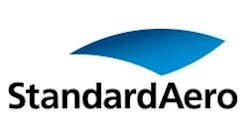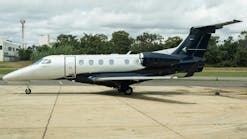Lack of Knowledge
By Richard Komarniski
February 1998
As we continue with the discussion of the human factors that affect our judgment, lack of knowledge seems to be an ever growing problem in our industry as aircraft become more and more complex. This article will discuss some of the issues associated with lack of knowledge and what we as aviation maintenance professionals can do to avoid this all too common cause of human errors.
Long gone are the days when aviation maintenance technicians were able to maintain an aircraft like a DC-4 with no other technical training than on-the-job training. Today, we are faced with aircraft systems that are so complex and integrated that it is next to impossible to maintain these aircraft without substantial technical training and reference resources. Three of the most important resources that should be used are the expertise of other people on your shift, the expertise available within your company, and the manufacturer"s maintenance manuals.
On some aircraft it is only possible for a line technician to understand the basics of the aircraft systems. Troubleshooting, which in some cases is becoming an art unto itself, should be a task that pushes the technician to seek the expertise found in the manual or to ask questions of fellow workers and to reconfirm this information with the appropriate manuals. We are in a rapidly changing environment and must leave our egos at home if we are to be successful in our profession.
After leaving tech college and as we advance in our careers, we begin to realize that we were only provided the basics to start learning. Realizing that the learning process never ends is critically important to the future of our careers. If you hated studying in college, you are in for a big surprise since throughout your career you will need to continue to learn as modifications and improvements are developed, systems are changed, and new technology continues to be incorporated into new aircraft. In any industry we find that the success of an individual in his career is based on the size of his library of information that he has read.
The last time we changed an airspeed indicator on an aircraft, we probably certified that the work met the airworthiness requirements or that the aircraft was serviceable or airworthy. Regardless of the wording of the certification, we had indicated the work was completed in accordance of the standards of airworthiness. Where do we buy this little black book titled "Standards of Airworthiness"? Unfortunately, there is no black book which holds all of the information we must know and comply with. Here is a suggestion: try the aircraft manufacturer"s maintenance manual. This is only the beginning. You also need to be familiar with the following references:
• Federal Aviation Regulations
• Advisory Circulars
• Canadian Aviation Regulations
• Type Certificate
• Airworthiness Directives
• Service Bulletins
• Supplement Type Certificate (if the airspeed on the aircraft was modified because of a STOL kit, etc.)
• Engineering Orders
• Flight Manual
• Parts Catalogue
This list is not complete, but is provided to give some guidance on the range of documentation with which we must be knowledgeable in order to perform our jobs safely and accurately every day. When we certify for the task we completed, we are saying that we have met the requirements of these documents. As we can see, our industry requires us to stay abreast of the information related to our skills.
Several authors of success-oriented self help books have suggested that if we each make the effort to study one hour a day for a year on the subject of our profession, we will be among the top 15 percent of knowledgeable persons within our profession. From another perspective, that is probably 365 hours more reading in your profession than the people you work with. In today"s aviation maintenance industry, this old saying is more true than ever: "It is strange how much you must learn before you know how little you really know." To avoid falling victim to the lack of knowledge human factor, make a commitment to continue to spend a small part of every day reading on subjects that affect you in your daily job.
If you work in an overhaul shop, or with different types of materials and fluids, consider taking the time to really understand the characteristics of the material composition, including its ability to withstand different types of stress at different temperatures, cause of fatigue, and crack propagation and ductility properties. These relatively small details of knowledge may prove invaluable some day.
Safety Nets
The safety nets we can implement to ensure we have the knowledge to complete our tasks properly start with leaving all egos behind at the
punch clock and remembering that the person who knows everything has the most to learn.
As part of your personal commitment to maintain and expand your professional knowledge, you should be willing to do whatever it takes to be a respected professional in this industry and to maintain the attitude that if you are given an unfamiliar task, do not blunder ahead without using the manuals or tapping into the experience of others. There is no room for error; instead, be a professional aviation maintenance technician.
Another safety net that you can put in place is to make a conscious effort to stay current with the latest processes and procedures in our industry. Again, this involves reading. Read trade magazines, manufacturer"s newsletters, service bulletins, conference notes, service difficulty reports, and malfunction defect reports related to the aircraft you maintain. All of these technical resources are valuable tools to keep you from becoming complacent.
As simple as it may seem, another good way of staying technically current and knowledgeable of changes in our industry is to communicate with others on your shift and work as a team. Talking to your coworkers about the things you are reading or have learned as a result of consulting technical reference material not only helps to make sure you correctly understood the material, but it increases the awareness of everyone that this type of personal effort is necessary. We all know that two or three people working on a problem is far better than one person trying to figure out the solution. Teamwork and communications help to reduce the potential of an error occurring due to lack of knowledge.
Periodically throughout our careers, we have had to participate in structured technical training in order to brush up on the basics and to maintain uniformity in maintenance procedures. As previously mentioned, troubleshooting has become significantly more complex than ever before. But there is a direct link between training and return on investment, found in the improved accuracy and efficiency (in terms of reduced time to complete the task) of troubleshooting when additional structured training has been made available.
A few other safety nets are worth mentioning, although you may not have thought of them in this way. Being an active member in the various professional associations and organizations applicable to our industry is a good way to meet others in our profession and helps in our efforts to stay knowledgeable in our field. And finally, in today"s age of embedded computers and advanced electronics, we all can benefit from a good basic night school or correspondence course on electronics. It is never too late.




